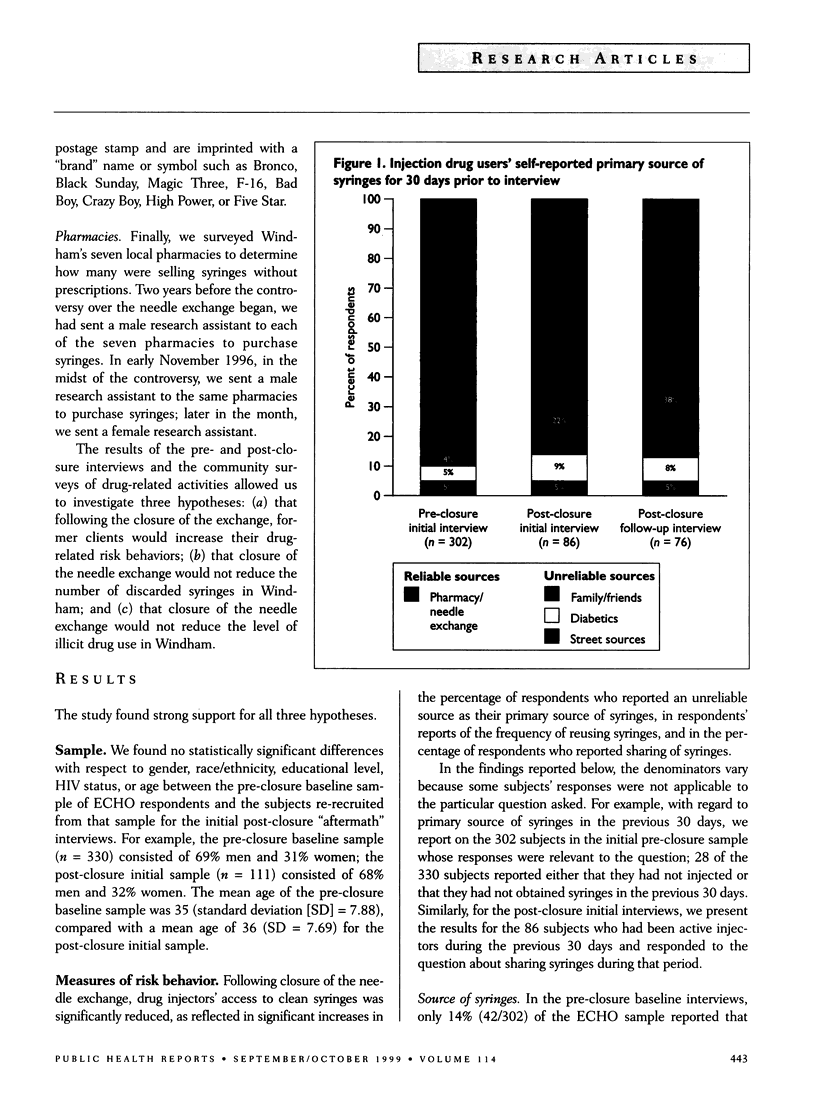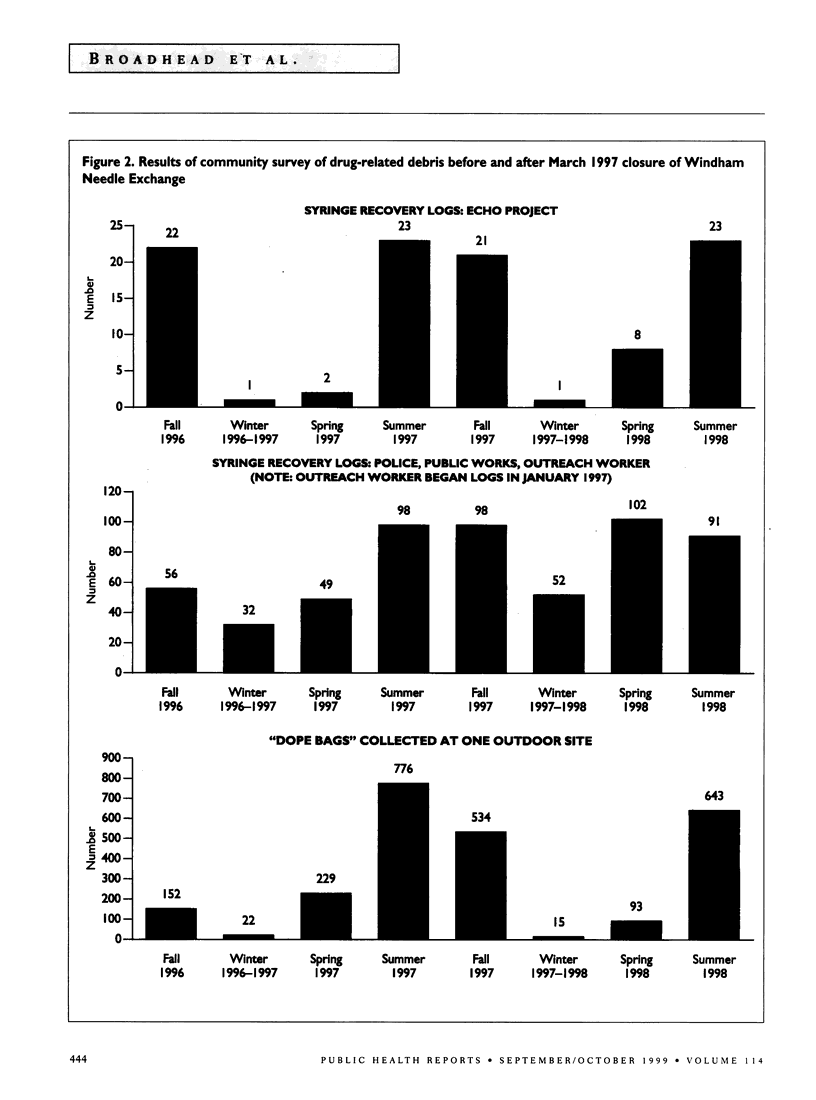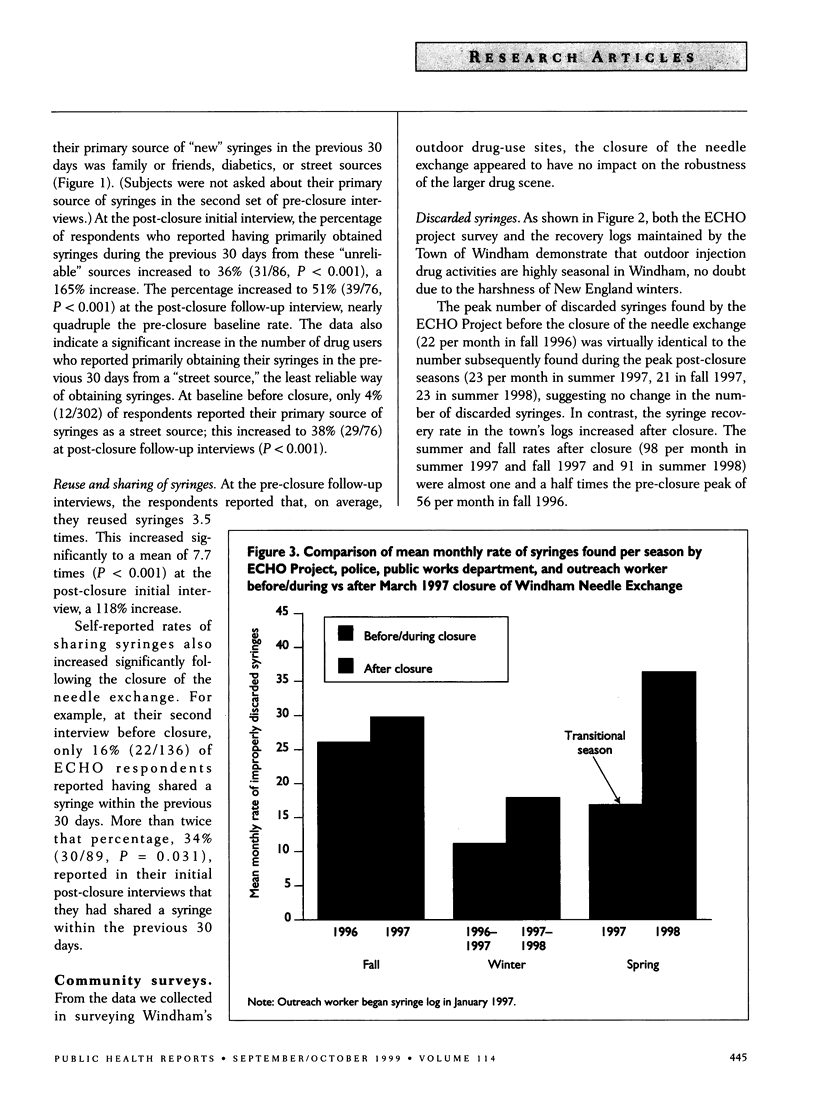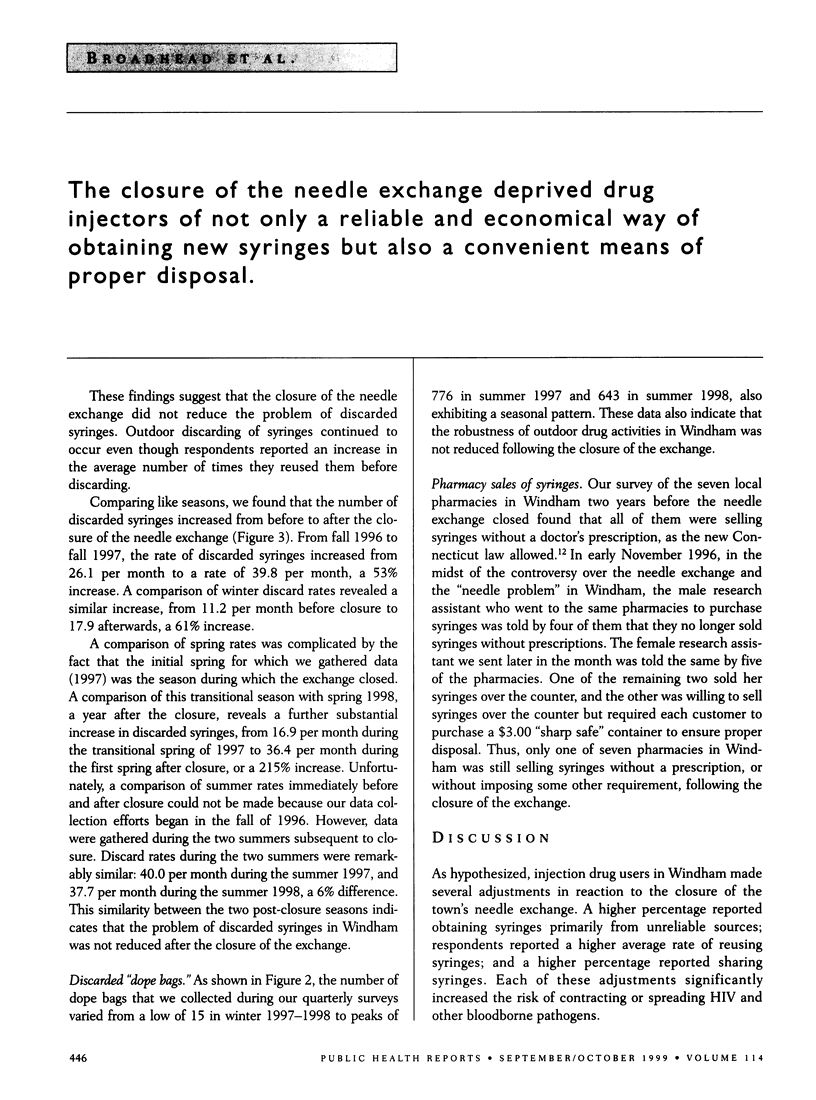Abstract
OBJECTIVE: The Windham, Connecticut, needle exchange closed in May 1997 after becoming embroiled in a public controversy in which it was blamed for the city's drug problem, discarded syringes, and even the economic decline of the city itself. The authors interviewed injection drug users and conducted a community survey of discarded drug paraphernalia to explore the effects of the needle exchange's closure. METHODS: After the needle exchange was closed in March 1997, the authors re-recruited former participants in an AIDS prevention research project, the majority of whom were clients of the needle exchange. The authors analyzed responses from these respondents' pre-closure interviews and from III post-closure initial interviews and 78 post-closure follow-up interviews as well as data on discarded syringes and "dope bags". RESULTS: Following the closure of the needle exchange, significant increases were found in the percentage of respondents who reported an unreliable source as their primary source of syringes, in respondents' reports of the frequency of reusing syringes, and in the percentage of respondents who reported sharing of syringes. Surveys of outdoor drug-use areas found that the closure of the needle exchange did not reduce the volume of discarded syringes and other drug-injection debris. CONCLUSIONS: The problems in Windham that led to the closure of the exchange still remain, and the city's drug injectors are engaging in higher levels of HIV risk behavior.
Full text
PDF








Selected References
These references are in PubMed. This may not be the complete list of references from this article.
- Broadhead R. S., Heckathorn D. D., Weakliem D. L., Anthony D. L., Madray H., Mills R. J., Hughes J. Harnessing peer networks as an instrument for AIDS prevention: results from a peer-driven intervention. Public Health Rep. 1998 Jun;113 (Suppl 1):42–57. [PMC free article] [PubMed] [Google Scholar]
- Kaplan E. H., Heimer R. HIV incidence among needle exchange participants: estimates from syringe tracking and testing data. J Acquir Immune Defic Syndr. 1994 Feb;7(2):182–189. [PubMed] [Google Scholar]


